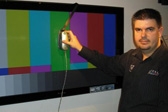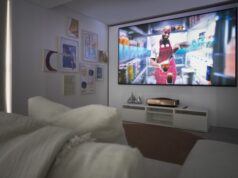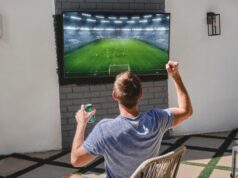
Just because your TV’s connected properly, it doesn’t necessarily mean you’re getting the best picture from it. Find out how to adjust your display’s settings for the best picture.

Calibration refers to altering the settings on your TV to improve the picture quality that you view it at. This can include altering sharpness, contrast, brightness, and colour so you can view your TV settings the way they were intended. All your video devices will need to be calibrated separately for you to achieve the best picture quality you possibly can.
Why do I need to calibrate my TV?
The environment where you view your TV will be different to that of everyone else, so when buying a new TV you will have to calibrate it to your specific viewing settings. If you’re moving your TV straight from the box to your living room, your settings are going to need to change in relation to the light and colour of the room.
When in a retail showroom, your TV has been calibrated to deal with the displays from other TVs as manufacturers tune settings to the strengths of the TV. These are usually a lot brighter and can appeal unnatural in your home setting. Added to this, they can burn the life of the TV prematurely by forcing it to operate on heightened settings.
How to calibrate your TV
For full calibration of your TV it is best to hire a professional to make sure you don’t damage the settings. However there are a few aspects on your TV that you can alter yourself to increase the quality of your picture. Discs are available for your TV that are specifically designed to help with calibrating your display correctly. Before starting, make sure you are positioned where you would usually view your screen, and in the right environment and light.
Brightness
A common misconception, this refers to the brightness of the blacks in your image, not the overall brightness of the picture. When brightness is set too high your blacks appear grey, and when it is set too low darker colours blend into one another and you lose detail. To correct the brightness controls, you want to increase the brightness to its full capacity before slowly calibrating it back down to the proper image. This is where the blacks are as black as they can be without losing any of the detail in the other dark colours.
Contrast ratio
Contrast ratio refers to the brightness of your white colours while also referring to the contrast of the colours on the screen in general. If the contrast ratio is set too high, your TV will be too bright and you will lose detail in the lighter colours. However if it is set too low the image will become dark. The best way to solve this problem is to use a test pattern, and increase the contrast to its maximum. Then, like brightness, decrease the contrast ratio of the image until all the shades displayed can be seen in detail. The best contrast display is when the image is as bright as it can be, but all the detail can still be defined.
Sharpness
Sharpness refers to the detail in the picture and can be calibrated depending on your own individual tastes. When set too high, sharpness can create images or define lines around images that detract from the original picture, whereas when sharpness is too low the picture will become too soft or even blurry. You want to calibrate your display so you can see the maximum amount of detail, without creating any obscuring new shapes in the image.
Colour
Changes in colour can contribute to the natural, or unnatural, look of your TV display. When turned up to high, colour settings give an unnatural or cartoon look, such as making people’s skin look sunburnt. When set too low, the colour of the screen can merge into a black and white display. The best way to measure this for most TVs is to choose a screen involving people and set the colour matching to their skin tones. You want to ensure that the level of colour is correct and defined, while also ensuring George Clooney doesn’t look sunburnt.
In the end, calibrating your screen will not only depend on your viewing settings, but also how you like to view your TV. If you’re after a detailed calibrating job, hire a professional and tell them when the image is right for you.





